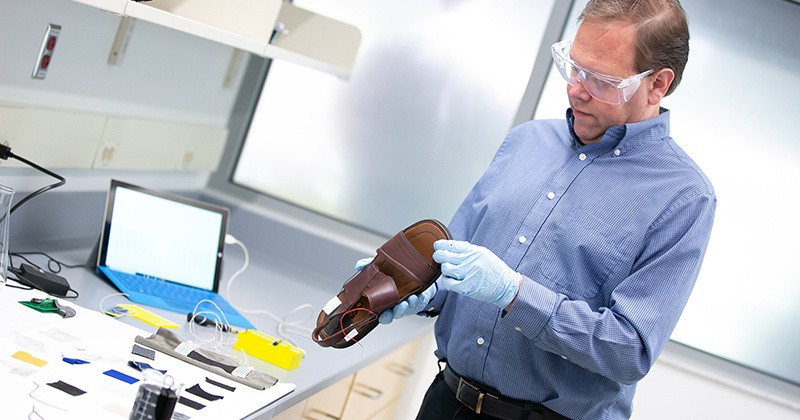A team of engineers from the University of Delaware introduces wearable nanotechnology designed to accelerate recovery, with the added benefit of adaptability to existing fabrics.

Transformative Approach to Health Monitoring
Spearheaded by Professor Erik Thostenson and supported by the National Science Foundation's Partnerships for Innovation program, "Henswear" envisions a transformative approach to health monitoring through nanomaterial-based sensors seamlessly integrated into everyday clothing.
The genesis of these nanomaterial sensors traces back over 15 years when Professor Thostenson initiated work on carbon nanotube-based sensors. This collaborative effort seeks to redefine the landscape of health monitoring by embedding sensors into textiles, providing real-time data on human movement.
Dedicated to advancing sensor technology across diverse applications, Interesting Engineering reported that the company initially focused on monitoring structural health infrastructure and human motion.
This aimed to assess the capability of Thostenson's nanomaterial-based sensors in collecting kinetic and kinematic data related to human movement. Traditionally conducted in a lab environment with sophisticated instruments, the study's outcomes laid the groundwork for the development of Henswear.
The latest iteration of these sensors exhibits exceptional flexibility and heightened sensitivity to pressure and angle changes, all while maintaining a thin profile. These sensors can seamlessly integrate into existing garments or be directly applied to fabrics.
Receiving Funds, Grant
The collaborative efforts of Doshi and Thostenson, alongside Jil Higginson, professor of mechanical engineering and biomedical engineering, and director of UD's Institute for Engineering Driven Health (EDH), began with a pilot study funded by Delaware INBRE.
With a two-year grant from NSF, the team is poised to conduct further research to validate the sensors, comparing them to conventional lab-based assessments. Dr. Higginson emphasized the focus on exercise and range of motion data, essential for clinicians to monitor patient therapy compliance.
UDaily reported that the grant will also support ongoing investigations into material properties, ensuring scalability and durability, including the ability to withstand washing while retaining functionality.
Collaborating with UD's Office of Economic Innovation and Partnerships (OEIP) and technology commercialization and medical devices expert Brian Pryor, the research team is strategically identifying optimal markets and applications for their cutting-edge technology.
They aim to understand sensor repeatability, delve into the interaction between the sensor and garments, and engage with industry partners to discern potential applications, customer needs, and the feasible integration points for this transformative technology.
Taking a significant step forward, the team is slated to participate in the NSF I-Corps National Teams program, intensifying their commitment to bridging the gap between pioneering research and tangible applications.
As per UD Magazine, the potential applications for the nanosensors range from enhancing fitness trackers to aiding in the recovery from injuries, showcasing the versatility of their innovation.
The researchers are enthusiastic about the profound impact on human well-being. Their optimism stems from the belief that this technology has the potential to expedite healing processes and facilitate a quicker return to optimal fitness levels.

ⓒ 2026 TECHTIMES.com All rights reserved. Do not reproduce without permission.




